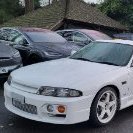Rotors
Announcements
-
Similar Content
-
Latest Posts
-
It's usually the pointy end of the wheel brace* digging into the palm of your hand. * I refuse to use the term "lug wrench".
-
not something I originally wanted to do. My plan was to just add the cam splash shields. This is the result of speaking with a few people in both time attack and drifting that have RB's making the same or more power than mine with the same issues. Using their experience and advice for what has actually worked in a similar application (sustained high RPM, long sweeping corners). They all have had at least an additional head sump drain breathers on top of the rear of head welsh plug drain/breather. I wouldn't do this for a car that's only street driven even my current setup has been sufficient for street duties.
-
By joshuaho96 · Posted
The OEM lug wrench you really need to put a lot of body weight on it to hit 75-80 ft-lbs compared to a torque wrench where I can knock it out no problem as a desk jockey that never hits the gym. The torque limit is your own body. -
By joshuaho96 · Posted
Seeing just how complicated you're making this is kind of terrifying to me. I would not want this level of hoses running all around the engine. I also am a fan of draining back to sump by default. -
This is lower price now given apparently nobody wants these or needs them. It's 550 but if someone sees it on SAU and wants to make an offer, please do so.
-




Recommended Posts
Create an account or sign in to comment
You need to be a member in order to leave a comment
Create an account
Sign up for a new account in our community. It's easy!
Register a new accountSign in
Already have an account? Sign in here.
Sign In Now